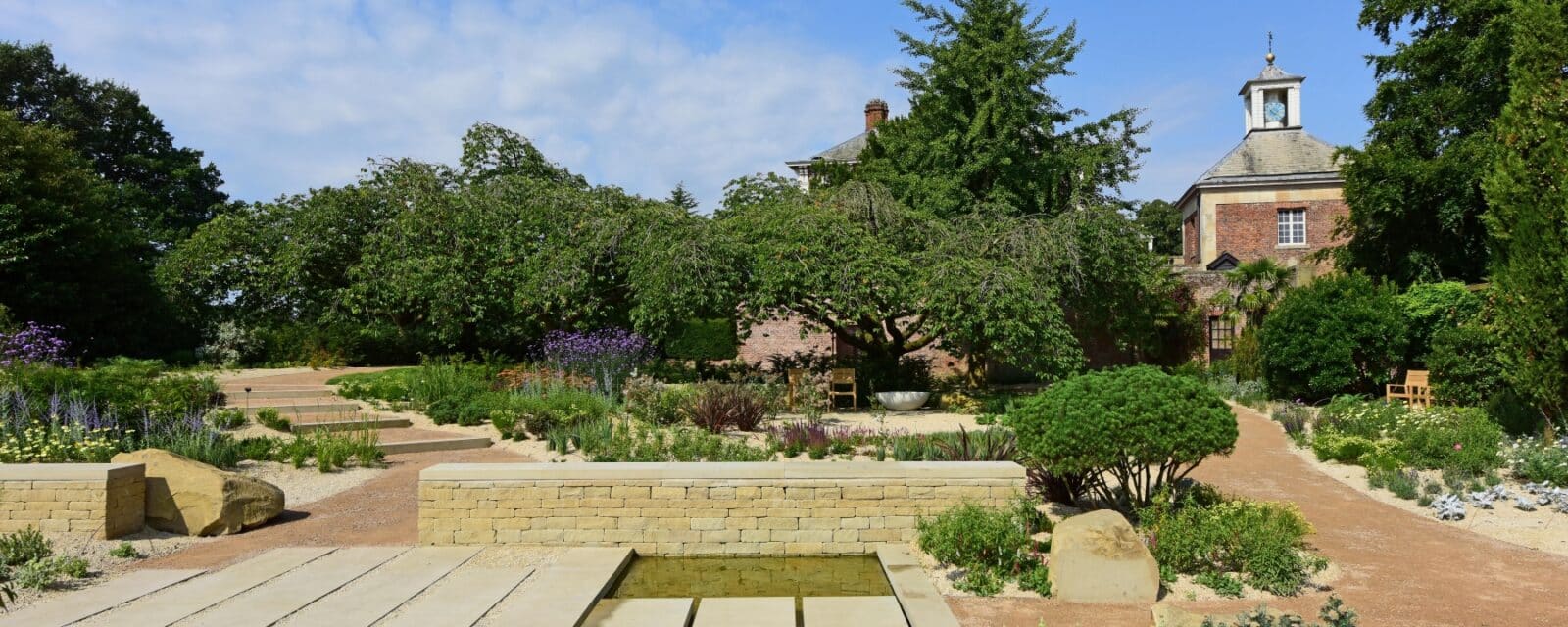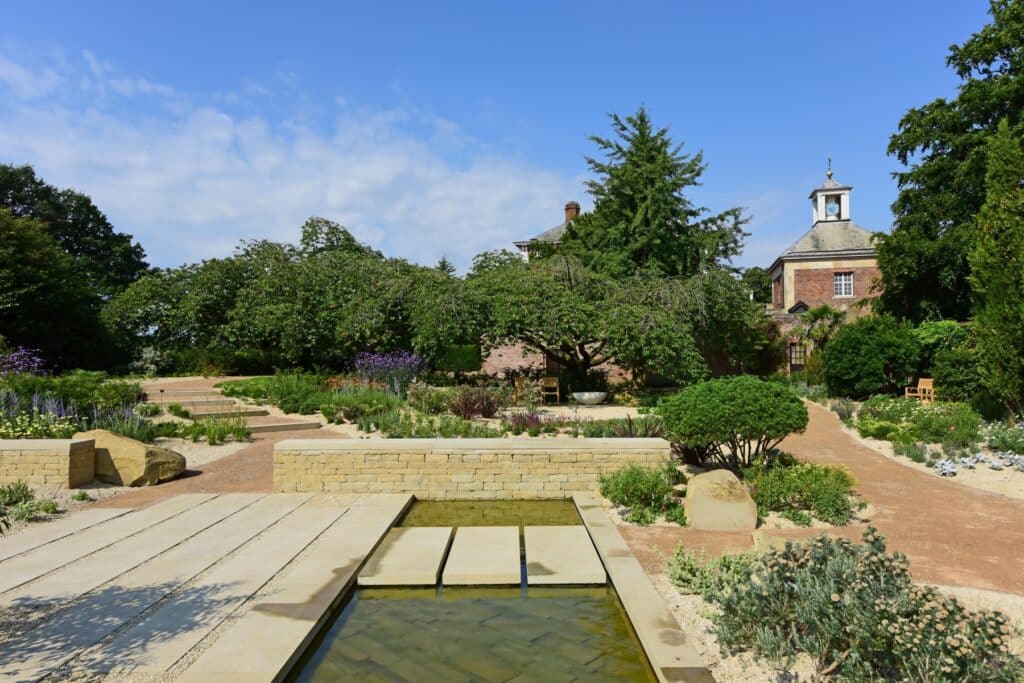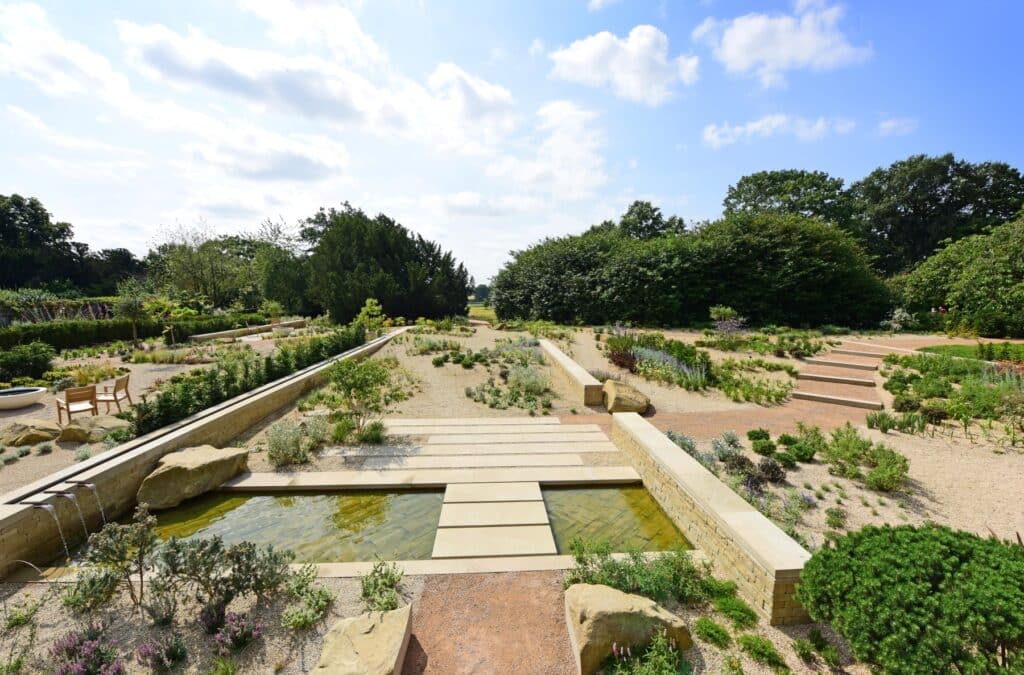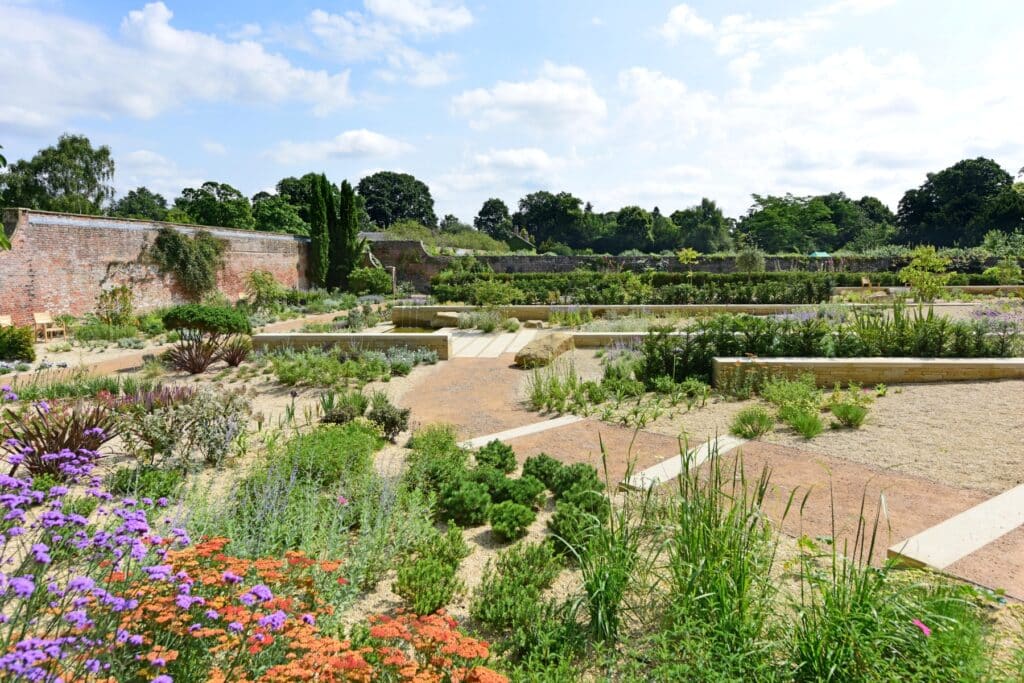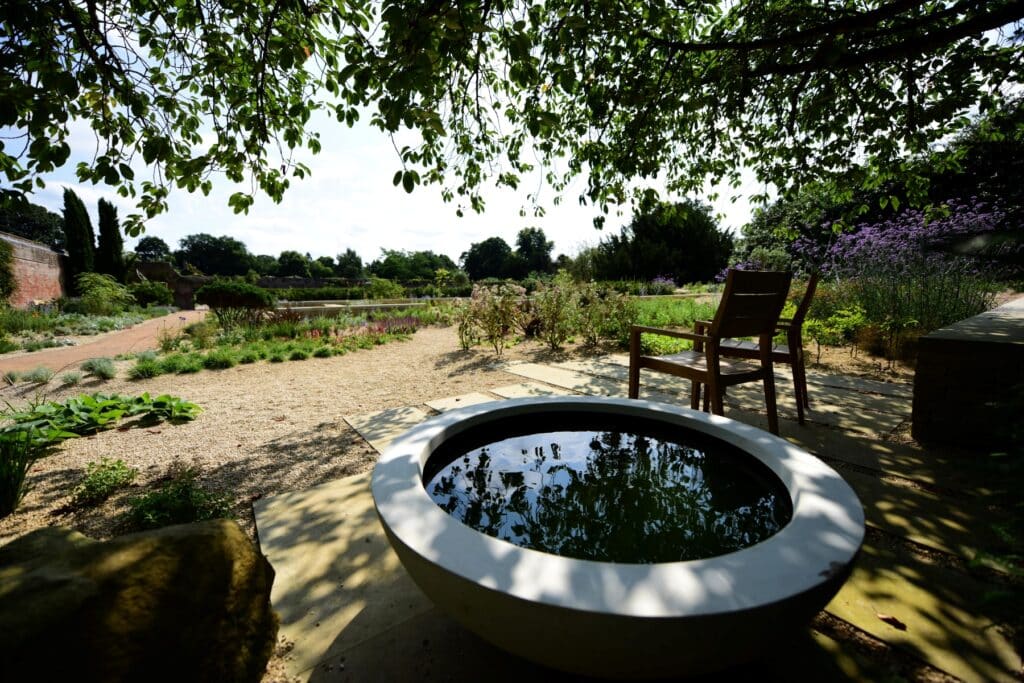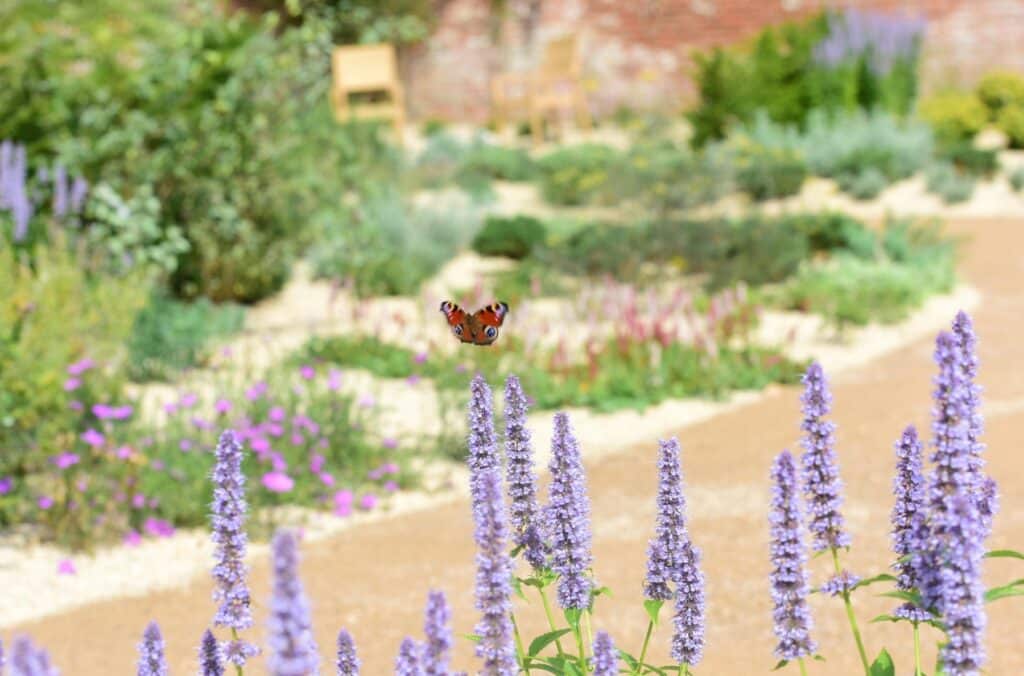Mediterranean Garden Open at National Trust’s Beningbrough
Our Mediterranean Garden at the National Trust’s Beningbrough in Yorkshire is now complete and open to the public. This garden is part of our 10 year landscape masterplan for the property.
The Italian Garden was in reality an idea from the later half of the twentieth century and so came without much in the way of historical baggage. Sandwiched between the Hall and the Walled Garden it was predominantly lawn and a few cherry trees and cypresses and was more or less a blank canvas.
The ground was gently sloping which was a gift as it allowed us to make sure excess water drained off and free draining soil was imported and gently mounded to enhance the contouring. What we have created is in effect a vast gravel garden. Long low walls made form local York stone allow these contemporary architectural elements to sit comfortably in the historical setting and I hope that it will feel quite timeless. I think the success of this garden comes from the marriage of the ancient red brick walls, the presence of the Hall towering over it and the elegance and textural beauty of the new planting.
In the UK we can expect warmer summers with prolonged dry periods and drought, but also an increase in very wet days, particularly in winter. The weather is already more variable and unpredictable and gardeners are likely to get caught out by late frosts, storms and extreme rain events. We need to start changing the way we garden and I have taken the opportunity to embrace this at Beningbrough.
Here are some of the key plants that we included.
Koelreuteria paniculalata
The Indian Rain tree is a climate change specialist and is unusual for a tree growing in the UK as its yellow flowers appear in summer. The slender open branch structure of this deciduous tree improves with age and becomes increasingly beautiful
Ozothamnus ‘Silver Jubilee’
This fast growing shrub is all about texture. The soft grey leaves contrast superbly with the right neighbours and although hailing from New Zealand it enhances the Mediterranean quality of a garden. The pale flowers are a welcome bonus.
Grevillea ‘Cranberra Gem’
The hardiest of all this Australian genus it is a stunning evergreen shrub with an impossibly exotic deep pink, almost red flower that comes in late winter and keeps flowering for 6 months.
Kniphofia ‘Tawny King’
The tubular flowers open orange and fade to cream and this robust poker stands at about 90cm tall above evergreen leaves. Its stately presence brings an exotic air.
Stipa gigantea
The flowering stems of the oat grass look best when clumps are repeated throughout a garden. The golden stems and flowers float over the surrounding planting, catching the light and they sway in the breeze.
(c) National Trust/Anthony Chappel-Ross
